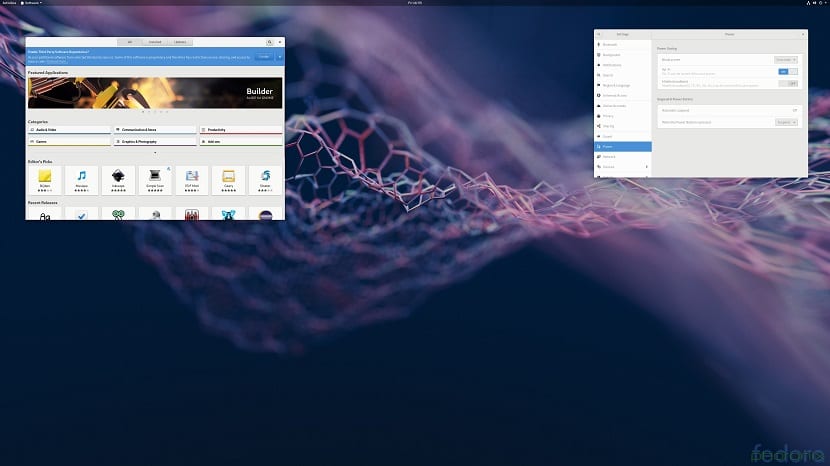
Fedora 29 will become the latest version of 2018 from the popular power user distribution: Fedora. In addition to the Ubuntu 18.10 release, Fedora 29 will be ready to be released later this month, if all goes well.
According to users who are testing the new version, Fedora 29 is a more polished version and has shown great stability despite being tested at the moment.
For those who are still unaware of Fedora I can tell you that this is a red hat based distro, Fedora is a general purpose Linux distribution based on RPM.
It is characterized by being a stable system, which is maintained thanks to an international community of engineers, graphic designers and users who report bugs and test new technologies.
Fedora 29 is bringing a lot of changes, although it is not a major release.
It is a good combination to offer the latest and greatest package versions and other enhancements, such as a flicker-free boot experience.
Fedora developers worked on basic FPGA support, A number of devices such as the Xilinx ZYNQ, such as the Ultra96 96boards and the Intel UP² based ones, have FPGAs built in.
FPGA manager is uA vendor neutral framework that has been on top of the kernel since 4.4.
This is the initial support for FPGAs in Fedora using vendor independent open source tools.
One of the main changes that have already been discussed is that this new version of Fedora 29 will arrive with the latest version of the Gnome 3.30 desktop environment.
The work station Atomic is now Fedora Silverblue. With the recent acquisition of CoreOS, the Atomic project is merging and Atomic Workstation is now known as Silverblue.
As well we can highlight that modularity is being extended to each edition of Fedora instead of just the server, In addition to the PPC64 architecture being discontinued, the little-endian variant (ppc64le) will still be supported.
System-wide changes

Today Fedora Scientific is packaged as ISO only, providing a Vagrant box will allow users to test this twist with ease.
Another important point, which may go unnoticed by some, is that the GRUB menu will not be displayed on the system where only one operating system is installed.
Spins, Labs, and Containers will now use VARIANT and VARIANT_ID in / etc / os-release instead of generic Fedora versions.
Of the other characteristics that we can highlight, we find the following:
- NSS loads the p11-kit modules by default: When the NSS database is created, the PKCS # 11 modules configured in the system p11-kit will be automatically registered and visible to NSS applications.
- As of tzdata-2018e, the upstream channel will now default to the state-of-the-art data format that includes negative daylight savings time offsets. As a throwback, the "rear" data format is still available in F28, F27, and F26.
- I686 builds now include SSE2 support by default.
- ZRAM support for ARM images: ZRAM will be able to be enabled for ARMv7 and aarch64 exchange of pre-generated images to improve performance and reliability on ARM single board computers such as the Raspberry Pi.
- After Red Hat decided to stop using BTRFS, Stratis was pushed as the new ZFS-like solution. Stratis has now reached version 1.0 and will be included in Fedora 29.
- MySQL will arrive with version 8.0.
- OpenShift Origin was updated to version 3.10.
- The use of OpenLDAP is being pushed to abandon support for MozNSS
- No more automatic Python compilations: The current form of automatic byte compilation in Python out of Python specific directories is too error prone. It is built on heuristics that are getting more and more erroneous. We will provide a way to exclude it and adjust the guidelines to prefer byte compilation of such files. Later, the old behavior will be opt-in only.
- Finally we can find the prioritization of the PATH user, thereby changing the PATH user ~ / .local / bin and ~ / bin to move to the beginning of the PATH list instead of the end.